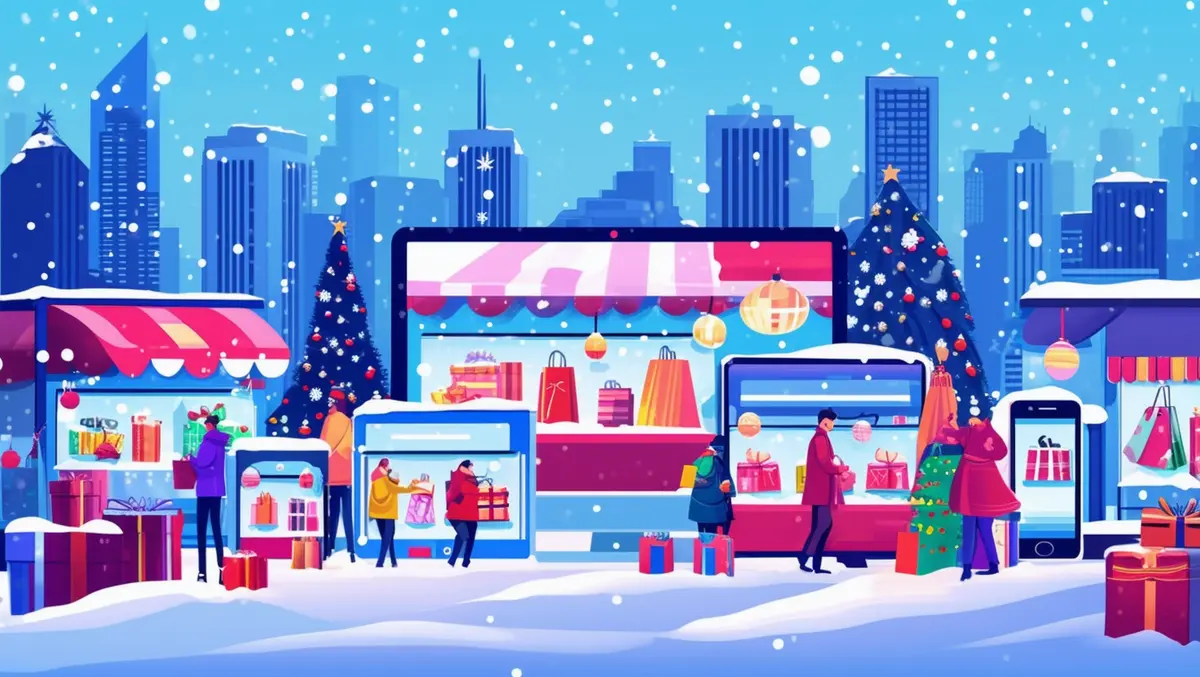
Adobe forecasts USD $240.8 billion in U.S. holiday online sales
Adobe has released its online shopping forecast for the 2024 holiday season, predicting that U.S. online sales will reach USD $240.8 billion. This figure represents an 8.4% year-over-year (YoY) growth compared to the 2023 holiday season, during which U.S. shoppers spent USD $221.8 billion online with a 4.9% YoY growth.
According to Adobe Analytics data, the analysis indicates that Cyber Week, which spans the five days from Thanksgiving through Cyber Monday, is expected to drive USD $40.6 billion in online spending. This marks a 7.0% YoY increase and accounts for 16.9% of the overall holiday season online sales. Cyber Monday alone is anticipated to generate a record USD $13.2 billion in spending, a 6.1% increase from the previous year. Black Friday is expected to see USD $10.8 billion in online sales, which is a 9.9% growth from last year.
Shopping on mobile devices is projected to hit a new milestone this season, contributing USD $128.1 billion, growing by 12.8% YoY, and representing 53.2% of all online spending. This is a notable shift as consumers increasingly prefer mobile over desktop shopping. Additionally, the Buy Now, Pay Later (BNPL) service is expected to reach new records, driving USD $18.5 billion in online spending, an 11.4% YoY increase.
Vivek Pandya, lead analyst at Adobe Digital Insights, commented on the changing shopping patterns: "The holiday shopping season has been reshaped in recent years, where consumers are making purchases earlier, driven by a stream of discounts that have allowed shoppers to manage their budgets in different ways. These discounting patterns are driving material changes in shopping behaviour, with certain consumers now trading up to goods that were previously higher-priced and propelling growth for U.S. retailers."
The forecast also highlights significant discounts as a key driver for online sales. Retailers are expected to offer discounts as high as 30% off listed prices to entice consumers. Categories like electronics, toys, and TVs are expected to see the most substantial discounts. Electronics are projected to have discounts peaking at 30% off, while toys and TVs are expected to offer discounts of 27% and 24%, respectively. Other categories with notable discounts include apparel, computers, furniture, and appliances.
In addition to the anticipated consumer spending and discounting trends, Adobe's forecast also sheds light on evolving consumer behaviours influenced by technology and social media. Shopping influenced by social media and influencers is expected to grow significantly. Influencers are reportedly driving consumers to shop ten times more than through social media overall. Adobe's survey revealed that 37% of Gen Z respondents have purchased items based on an influencer's recommendation.
The role of generative AI in shopping is also noteworthy. Adobe's data shows traffic to retail sites from generative AI-powered chatbots has doubled in 2024, and direct referrals have increased eightfold compared to the previous year. A significant number of consumers who have used generative AI for shopping believe it enhances their experience, and many plan to use it for the holidays to find the best deals and specific items online quickly.
Furthermore, product categories expected to be top sellers this season include popular toys, gaming consoles, and the latest smartphones. Top toys include the Bluey Ultimate Lights and Sounds Playhouse, Slime kits, and LEGO sets. The hottest gaming consoles are expected to be the Sony PlayStation 5, Xbox Series X, and Nintendo Switch OLED. Additionally, the iPhone 16 and Samsung Galaxy S24 Ultra are among the top electronic items predicted to drive holiday sales.
In conclusion, Adobe's forecast paints a robust picture of the 2024 holiday season, driven by strategic discounting, mobile shopping, and emerging technologies. Online sales are on a trajectory to reach new heights, underpinned by evolving consumer behaviours and preferences.
.webp)

